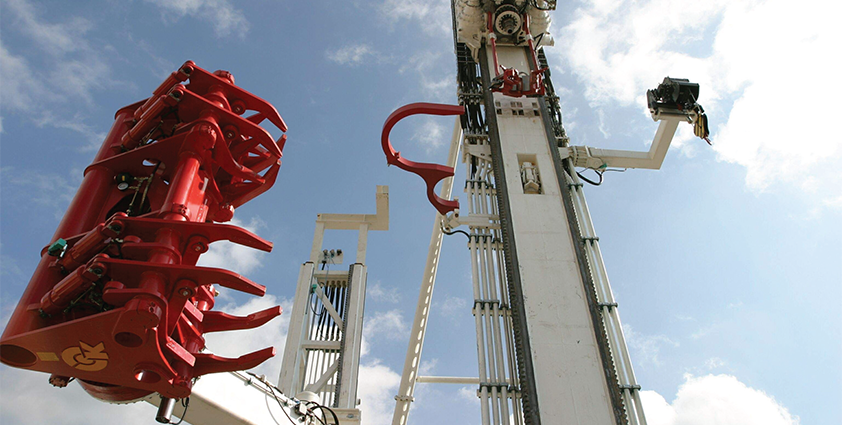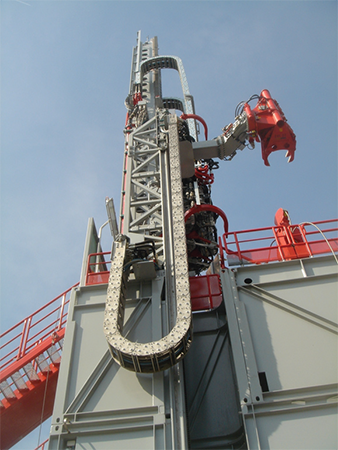
The Streicher Group
A team effort
“In comparison to Streicher, which has founded back in 1909, the Drilling Technology Division of the group is a relatively new venture that was set up in May 2000,” explains Andreas Beck, head of technology for The Streicher Group.
“In the time since Streicher acquired DrillTec, a drilling contractor known for performing horizontal directional drilling on a global scale. This decision was made as it perfectly fit into the Streicher portfolio, which already included a division focused on building and servicing pipelines.
“Today DrillTec represents a key piece of the puzzle that together makes up Streicher’s operations in that it can take on additional linked well projects, both of the horizontal and vertical variety. To provide an example of the synergy between the two businesses, Streicher is currently in the process of working on a project building gas compressors and regulation stations for a customer, and at the same time DrillTec is drilling the wells into the gas storage caverns. This is just one example of how DrillTec is adding special and fundamental services to the energy sector of The Streicher Group.”
The Drilling Technology Division carries out a range of services that start at the ideas stage. Following this the detailed design process can begin with other services including manufacturing, engineering, assembly, commissioning and testing. The division offers comprehensive training for all of its customers that commences at the early stages of their relationship, and said customer can then work together with the division whilst equipment is being assembled, thus learning about the product’s functionality from its first day of existence. Beyond this, Streicher’s Drilling Technology Division can offer services from its repair subsidiary, which provides advice and support to external contractors or operators.
The core business of the division is essentially split into two categories, horizontal and vertical drilling activities. As Andreas states, these two methods of drilling require different approaches and mean encountering differing challenges: “The horizontal rigs are normally shipped from one continent to the next, which reflects the high levels of mobility available to the division from land and sea. All the modules and components are packed in ISO containers that have CSC approval, guaranteeing a fast and economic shipment.
“These rigs are designed to operate in any climate, be it the heat of the desert or extremely cold seas, and very often operate in remote locations, therefore they are designed to be serviced and repaired in a simple way by the rig crew only. In-built satellite systems allow the headquarters of the customer to examine the parameters and condition of the rig at all times, assisting  the crew in tackling any problem that may arise. With the vertical rigs the main drivers are modularity, high-levels of automation, low emissions, functional safety and hands-off technology, again to limit the amount of manual repair and service work that may be required.”
the crew in tackling any problem that may arise. With the vertical rigs the main drivers are modularity, high-levels of automation, low emissions, functional safety and hands-off technology, again to limit the amount of manual repair and service work that may be required.”
Two new designs the division is currently working on are for a 500 tonne rig and a combination rig that can be used in the extraction process of shale gas: “The decision to begin working on a 500 tonne rig came about when the division made the decision that it would be an ideal time to work on rigs that can reach deeper well depths,” Andreas says. “This rig type works with a vertical pipe-setback, storing stands built of three drillpipes each, and draw works, yet still comes with proven benefits in the areas of modularity, movement and automation. By moving into this field it completes the portfolio of the division.
“Looking at the gas market, it is clear to most within the industry that it will be moving very rapidly in the coming years towards shale as an energy source and it will become a very significant component in bridging into a non-atomic energy mix. Shale gas reservoirs are massive in scale, but are very difficult to explore, so the division is concentrating on developing new techniques that will bring costs down as well as adapting ideas and elements from industrial serial production thinking.”
The Streicher Group and its Drilling Technology Division always work towards being a partner to its customers, not simply a manufacturer. To achieve this it relies on several of its key strengths: “Two key elements set the division apart, the first being its ability to utilise DrillTec as an in-house drilling contractor, capitalising on its field experience and knowledge of market demands,” Andreas says enthusiastically. “Another strength is that The Streicher Group has vast levels of competency in a host of relevant disciplines, from steelwork to construction, hydraulics, electronics and software. This means the division can produce a fully in-house application and is directly and solely responsible for the finished quality of the product.”
Despite a decrease in business within the industry during the recession, The Streicher Group managed to compensate for the downturn due to its diversity and are now ready to capitalise on the return of confidence to the market: “The division is in the midst of working on elements for further rig automation. The key to this work is to design equipment and components for high-speed automation that will help the division capitalise on the growing movement of the energy market towards unconventional oil and gas reservoirs, a development that will create tremendous rig opportunities,” Andreas concludes.
The Streicher Group – Drilling Technology Division
Services: Vertical and horizontal drilling rigs